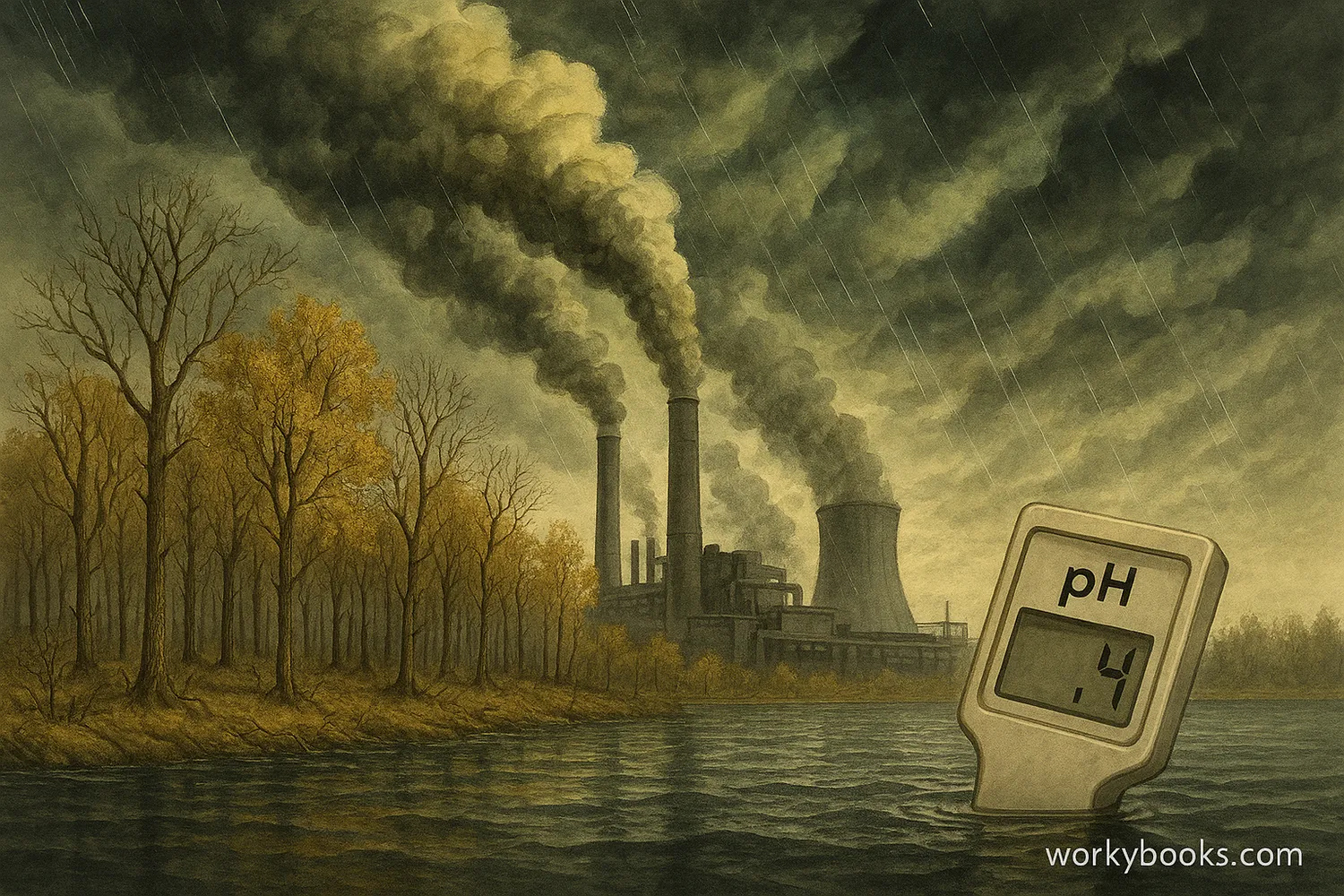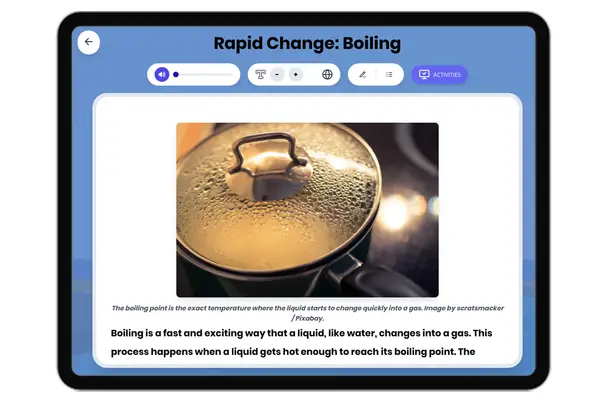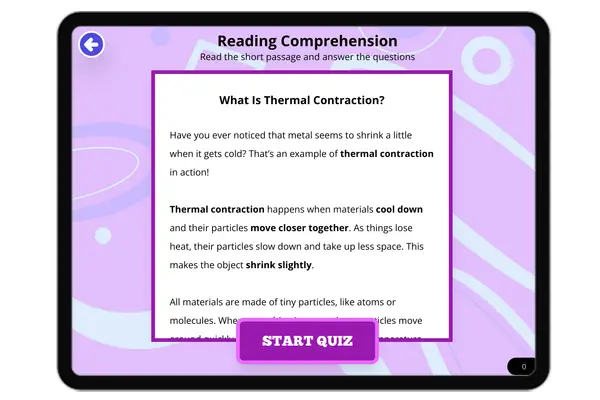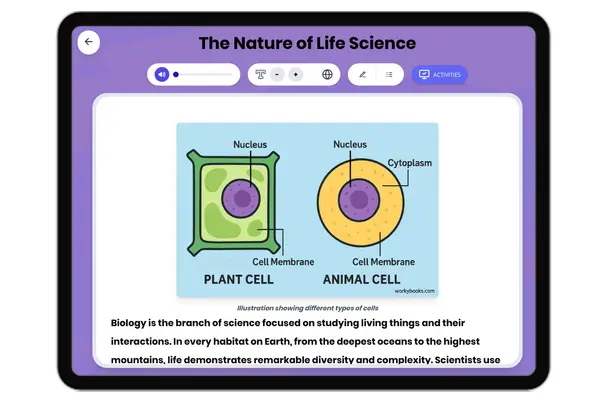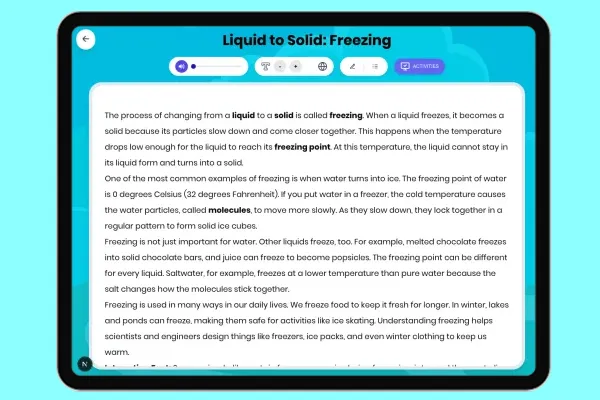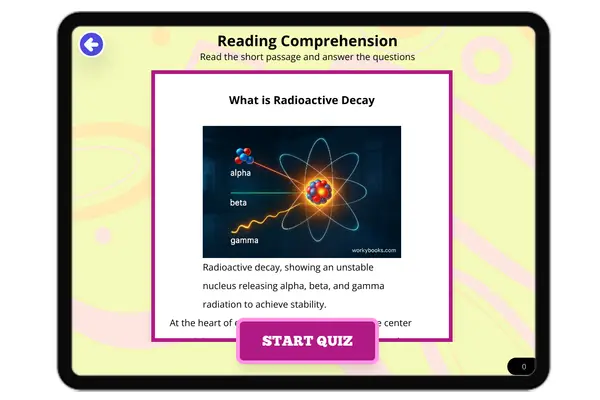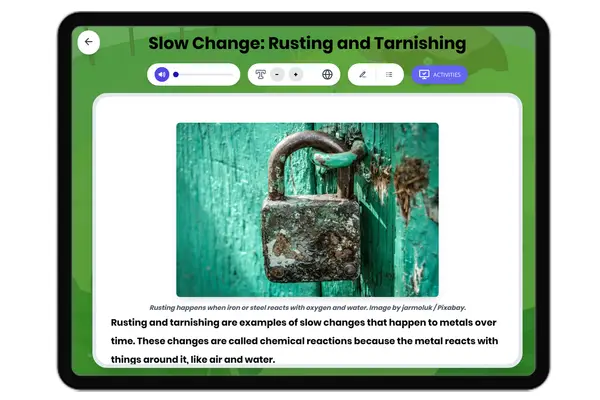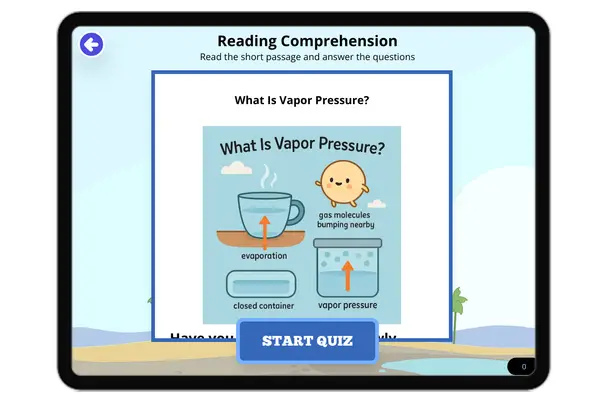What causes Acid rain? — Reading Comprehension
Premium Resource
Grades
- 3
- 4
- 5
- 6
- 7
- 8
PRINT+DIGITAL RESOURCE
This learning resource is available in interactive and printable formats. The interactive worksheet can be played online and assigned to students. The Printable PDF version can be downloaded and printed for completion by hand.
About This Reader
"This comprehensive reading passage for middle school students delves into the causes and effects of acid rain. Aligned with NGSS standard MS-PS1-4, it explains how human activities, particularly the burning of fossil fuels, release sulfur dioxide and nitrogen oxides into the atmosphere. The passage details the chemical reactions that transform these pollutants into sulfuric and nitric acids, which then fall to the ground as precipitation. Students will learn about the detrimental impact of acid rain on forests, aquatic ecosystems, and man-made structures. The content is designed to be engaging for grades 6-8, using clear language and relatable examples to illustrate complex scientific concepts. It emphasizes the interconnectedness of human actions and environmental consequences, fostering a deeper understanding of real-world environmental issues."
Perfect For:
👩🏫 Teachers
- • Reading comprehension practice
- • Auto-graded assessments
- • Literacy skill development
👨👩👧👦 Parents
- • Reading practice at home
- • Comprehension improvement
- • Educational reading time
🏠 Homeschoolers
- • Reading curriculum support
- • Independent reading practice
- • Progress monitoring
Reading Features:
📖
Reading Passage
Engaging fiction or nonfiction text
❓
Comprehension Quiz
Auto-graded questions
📊
Instant Feedback
Immediate results and scoring
📄
Printable Version
Download for offline reading
🔊
Read Aloud
Voice-over with word highlighting


